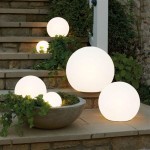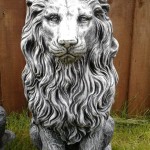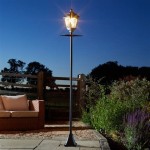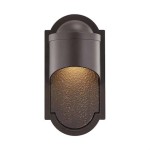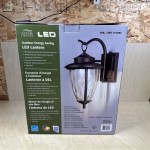Wall Mounted Outdoor Heat Lamps: Extending Comfort and Warmth to Your Outdoor Spaces
Wall mounted outdoor heat lamps offer a practical and efficient solution for extending the usability of patios, decks, and other outdoor areas, particularly during cooler months. These devices provide targeted warmth, allowing individuals to enjoy outdoor spaces comfortably even when ambient temperatures drop. Their wall-mounted design maximizes space, making them suitable for various outdoor settings, from residential backyards to commercial patios and restaurants.
The appeal of outdoor heat lamps lies in their ability to generate radiant heat, which directly warms objects and people within their range rather than heating the surrounding air. This method is significantly more efficient than traditional convection heating, particularly in open or semi-open outdoor environments where heat dissipates quickly. With a wide array of models available, understanding the key features, technologies, and installation considerations is crucial for choosing the most suitable wall mounted outdoor heat lamp for specific needs.
Understanding the Types of Outdoor Heat Lamps
Several distinct technologies power wall mounted outdoor heat lamps, each with its own advantages and disadvantages. The choice of technology significantly impacts the heat output, energy efficiency, and overall performance of the lamp.
Electric Infrared Heat Lamps: These are among the most common types of outdoor heat lamps. They utilize infrared radiation to generate heat, directly warming objects and people within their range. Electric infrared lamps are available in various wattages, allowing for customization based on the size of the area to be heated. They offer instant heat, reaching full operating temperature almost immediately, and are generally considered to be a cleaner and more environmentally friendly option compared to gas-powered alternatives.
Within the electric infrared category, there are different types of emitters, including:
Quartz Infrared Lamps: These utilize a quartz glass tube containing a heating element, typically a tungsten filament. They provide intense heat output and are suitable for larger areas. However, they can produce a bright red or orange light, which may be undesirable in some settings.
Carbon Fiber Infrared Lamps: These utilize a carbon fiber heating element, offering a softer, more subtle heat compared to quartz lamps. They also produce less visible light and are generally more energy-efficient. Carbon fiber lamps are often preferred for residential applications where a gentler heat and less intrusive lighting are desired.
Ceramic Infrared Lamps: These lamps are known for their durability and long lifespan. They emit heat without producing any visible light, making them suitable for environments where light pollution is a concern. Ceramic heaters are slower to heat up compared to quartz or carbon fiber lamps but provide a consistent and reliable source of warmth.
Gas-Powered Heat Lamps: These lamps utilize propane or natural gas to generate heat. While typically available as freestanding units or overhead patio heaters, there are wall-mounted options available. Gas-powered heat lamps offer high heat output and are suitable for larger outdoor areas. However, they require a gas connection, which may limit their placement options. They also produce emissions and require proper ventilation to ensure safe operation.
Factors to consider when choosing between electric and gas-powered heat lamps include:
Heating Requirements: The size of the area to be heated and the desired temperature increase will influence the required heat output. Gas-powered lamps generally offer higher heat output, while electric lamps provide a more targeted and controlled heat.
Energy Efficiency and Cost: Electric heat lamps are generally more energy-efficient, particularly carbon fiber models. However, the cost of electricity versus gas may vary depending on location and usage patterns.
Installation Requirements: Electric heat lamps require only an electrical connection, while gas-powered lamps require a gas connection, which may necessitate professional installation.
Environmental Impact: Electric heat lamps produce no emissions, while gas-powered lamps emit carbon dioxide and other pollutants.
Key Features and Considerations for Wall Mounted Heat Lamps
Beyond the heating technology, several key features and considerations should be evaluated when selecting a wall mounted outdoor heat lamp. These factors contribute to the overall performance, safety, and user experience.
Wattage and Heat Output: The wattage of an electric heat lamp or the BTU (British Thermal Unit) rating of a gas-powered lamp indicates its heat output. Higher wattage/BTU ratings correspond to greater heat output and the ability to effectively heat larger areas. It is important to choose a lamp with sufficient wattage/BTU rating for the intended application. Overestimating the heating requirement can lead to unnecessary energy consumption, while underestimating it may result in inadequate warmth.
Heating Area: Manufacturers typically provide an estimated heating area for their heat lamps. This area is an approximation and can vary depending on factors such as ambient temperature, wind conditions, and mounting height. It is advisable to consider the estimated heating area as a guideline and to err on the side of selecting a lamp with slightly greater coverage than initially anticipated.
Adjustability and Control: Many wall mounted heat lamps offer adjustable heat settings, allowing users to customize the heat output to their preferences and the prevailing weather conditions. Some models also feature remote controls, timers, and motion sensors, further enhancing convenience and energy efficiency. The ability to adjust the direction of the heat is also beneficial, allowing users to focus the warmth where it is needed most.
Safety Features: Safety is paramount when dealing with heating appliances. Look for heat lamps that incorporate safety features such as:
Automatic Shut-Off: This feature automatically shuts off the lamp if it overheats or tips over, preventing potential fire hazards.
Cool-Touch Housing: This feature ensures that the exterior of the lamp remains cool to the touch, reducing the risk of burns.
Weather Resistance: Outdoor heat lamps should be designed to withstand the elements. Look for models with a high IP (Ingress Protection) rating, indicating their resistance to water and dust. A corrosion-resistant finish is also essential to prevent damage from exposure to moisture and salt air.
Mounting Options and Hardware: Ensure that the chosen heat lamp comes with the necessary mounting hardware and instructions for secure and stable wall mounting. Consider the location of the mounting surface and the availability of electrical outlets or gas connections. The mounting angle of the lamp should be adjustable to allow for optimal heat direction.
Durability and Warranty: A durable construction and a reasonable warranty offer peace of mind and ensure that the heat lamp will provide years of reliable service. Look for models made from high-quality materials and with a warranty that covers defects in materials and workmanship.
Installation and Maintenance of Wall Mounted Outdoor Heat Lamps
Proper installation and regular maintenance are crucial for ensuring the safe and efficient operation of wall mounted outdoor heat lamps. Incorrect installation can lead to electrical hazards, gas leaks, and reduced performance. Neglecting maintenance can shorten the lifespan of the lamp and compromise its safety.
Installation Guidelines: Follow the manufacturer's instructions carefully when installing the heat lamp. These instructions will provide specific guidance on mounting height, clearance requirements, and electrical or gas connections. It is recommended to hire a qualified electrician or gas fitter for installation, particularly if you are not comfortable working with electrical or gas systems.
Key installation considerations include:
Location: Choose a location that is protected from the wind and rain as much as possible. Ensure that the lamp is not positioned too close to flammable materials such as awnings, curtains, or foliage. Consider the proximity of electrical outlets or gas connections.
Mounting Surface: Mount the lamp to a sturdy and stable surface such as a wall or post that can support its weight. Use appropriate mounting hardware and ensure that the lamp is securely fastened.
Electrical/Gas Connections: If installing an electric heat lamp, ensure that the electrical circuit is properly grounded and that the wiring is adequate for the lamp's wattage. If installing a gas-powered lamp, ensure that the gas connection is properly sealed and that there are no leaks. A qualified gas fitter should perform the gas connection.
Clearance Requirements: Maintain the recommended clearance distances from combustible materials as specified by the manufacturer. This is essential to prevent fire hazards.
Maintenance Procedures: Regular maintenance will help to keep your heat lamp operating efficiently and safely. Key maintenance tasks include:
Cleaning: Clean the lamp regularly with a soft cloth to remove dust and debris. Avoid using harsh chemicals or abrasive cleaners that could damage the finish.
Inspection: Inspect the lamp regularly for any signs of damage, such as cracks, frayed wires, or loose connections. Replace any damaged parts immediately.
Emitters Replacement: Replace the heating element (for electric lamps) or burner (for gas lamps) when it reaches the end of its lifespan. Refer to the manufacturer's instructions for replacement procedures.
Storage: If you plan to store the heat lamp during the off-season, clean it thoroughly and store it in a dry, protected location. Disconnect the electrical or gas connection before storing the lamp.
By carefully considering the type of heat lamp, key features, and installation requirements, and by performing regular maintenance, you can ensure that your wall mounted outdoor heat lamp provides years of comfortable warmth and enjoyment in your outdoor spaces.

Wall Mounted Patio Heaters From Herschel Stylish Outdoor

Wall Mounted Patio Heaters From Herschel Stylish Outdoor

Heatsail Dome Wall Mount Electric Patio Heater

Patio Fire Sense Black Steel Wall Mounted Infrared Heater

Kmh 30r 3kw Infrared Outdoor Heater Castle Heaters

Ecostrad Heatglo Infrared Patio Heater Black 2kw

Wall Mounted Patio Heater Remote Control 2kw Silver Slim Design

Wall Mounted Patio Heaters From Herschel Stylish Outdoor
2500w Infrared Patio Heater Wall Mounted Indoor Outdoor Garden Electric Warmer

The 2 Best Outdoor Patio Heaters Of 2024 Reviews By Wirecutter
Related Posts
